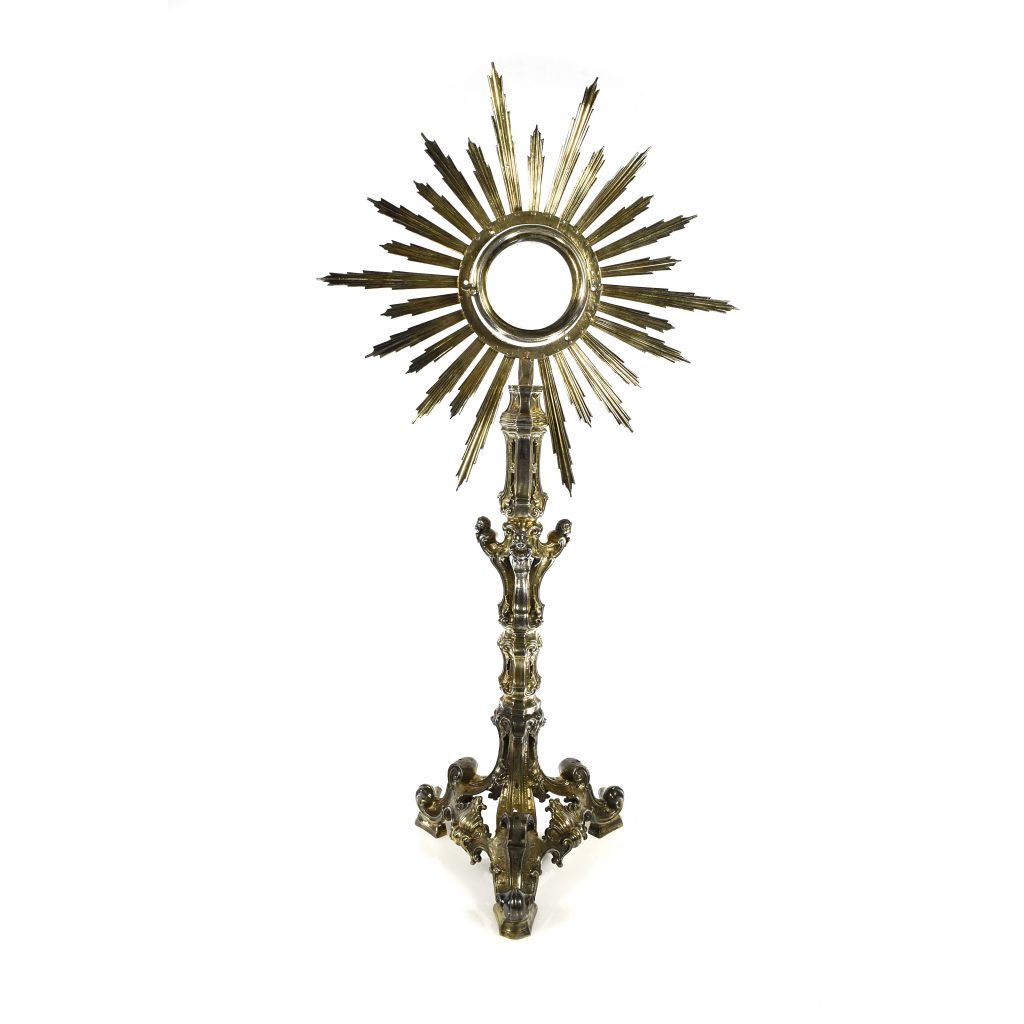
Autor: Desconhecido
Material/Técnica: Metal/ Fundição/ Prata
Século: XVII
Procedência: Igreja da Nossa Senhora do Rosário e Capela São Benedito
Dimensão: 37x37cm – base 46×20
Dados Históricos: O design do ostensório, normalmente confeccionado em ouro tem um significado, que vai muito além de simplesmente ser um objeto pomposo. Ele representa o sol resplandecente com raios saindo do centro, cujo simbolismo é evidente, a Luz de Cristo Espalhando-se pelo mundo inteiro. A palavra Ostensório tem sua origem no latim, do verbo ostendere, que significa expor, mostrar. Por isso, ele é usado apenas em ocasiões onde o Corpo de Cristo deva ser exposto para adoração pública. Nas demais ocasiões, a Hóstia Consagrada deve ser mantida na Custódia ou Ostensório por sua vez, guardada o Sacrário – outros objetos litúrgico que irei comentar mais para a frente neste site. Já o Ostensório vazio, deve ser mantido na Sacristia. Assim, o ostensório por si só, não representa nada além de um objeto. Ele apenas vale quando a Hóstia Santa, Jesus Vivo, está lá dentro. Dada a sua importância, apenas duas pessoas são autorizadas a manusear artigo religioso, são eles: o sacerdote e o diácono.
Author: Unknown
Material / Technique: Metal / Casting / Silver
17th century
Origin: Our Lady of Rosary Church and Saint Benedict Chapel
Dimension: 37x37cm – base 46×20
Historical data: The design of the monstrance, usually made of gold, has a meaning that goes far beyond simply being a pompous object. It represents the shining sun with rays coming out of the center, whose symbolism is evident, the Light of Christ spreading throughout the world. The word Ostensório has its origin in Latin, from the verb ostendere, which means to expose, to show. Therefore, it is used only on occasions where the Body of Christ is to be exposed for public worship. On other occasions, the Consecrated Host must be kept in the Custody and, in turn, the Shrine is kept – other liturgical objects that I will comment on later on this website. The Ostensório, on the other hand, must be kept in the Sacristy. Thus, the monstrance alone represents nothing but an object. It is only valid when the Holy Host, Jesus Alive, is inside. Given their importance, only two people are authorized to handle religious articles, they are: the priest and the deacon.

